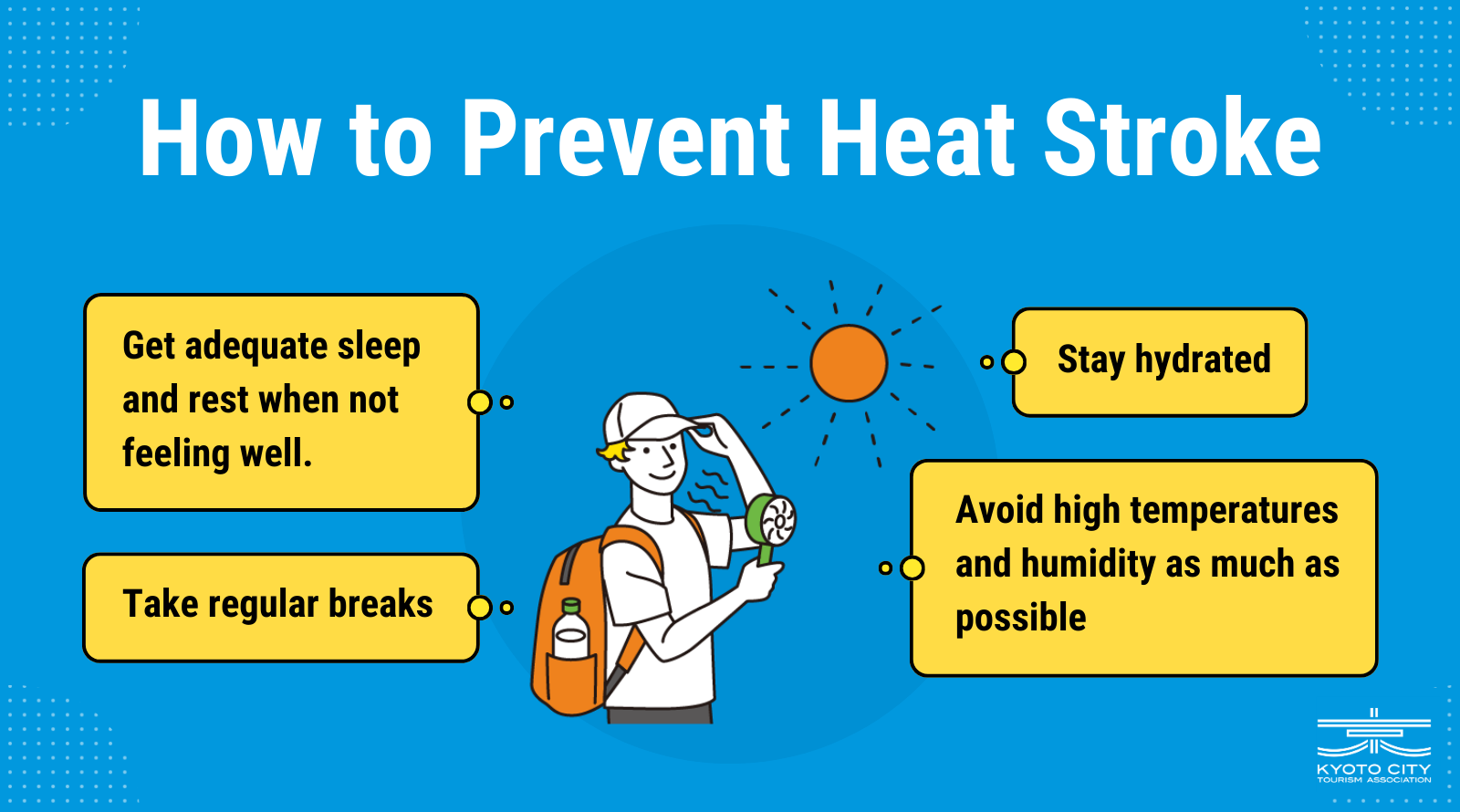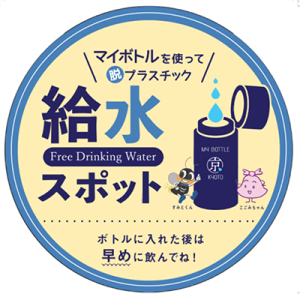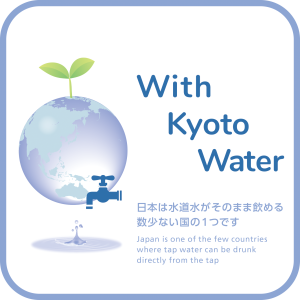
As summer is starting in Japan, both the temperature and humidity are on the rise. Though they might not yet be at their peak, it is important to know that heatstrokes can occur at any time, especially when the body is struggling to adjust to the rapidly raising temperature. Extra caution is advisable if you are traveling from areas where heatstrokes are less common. Please make sure to follow the tips written down below and keep yourself safe.
1. Avoid high temperatures and humidity.
- When inside a building, lower the room temperature with air conditioning or other devices.
- Don’t overexert yourself when the temperature is high.
- Wear breathable clothing.
- Be especially careful on days when the temperature suddenly rises.
2. Drink plenty of water
- Drink water even before you start to feel thirsty.
- If you are sweating a lot, be sure to take in plenty of sodium.
3. Rest
- Take frequent breaks and avoid intense exercise.
4. Take care of your health.
- Check the weather forecast and heat index (WBGT) before heading out.
- Try to eat a balanced diet in order to replenish nutrients, get enough sleep and exercise moderately.
Heatstroke alert
“Heatstroke alerts” are issued by the Ministry of Environment and the Japan Meteorological Agency when the predicted risk of heatstroke is extremely high. By warning people of the dangerous temperature and encouraging them to take preventive measures, it is possible to lower their chances of heatstroke.
If the heat index (WBGT) is forecast to be 33 or higher anywhere in the prefecture’s area, a heatstroke alert is issued at 5:00 p.m. on the day before and at 5:00 a.m. on the day with the dangerously high temperature.
Special heatstroke alert
Starting in 2024, a “special heatstroke alert” has begun to be issued when unprecedented, widespread and dangerously high temperatures are expected to occur.
If the heat index (WBGT) is forecast to reach 35 or higher, the alert will be issued at 2 p.m. on the day before in each prefecture.
Special heatstroke alert information
*When the special heatstroke alert is issued, Kyoto opens cooling shelters throughout the city. Please check the opening hours of each facility before trying to use them. Please follow the rules of each facility:
List of cooling shelters in Kyoto (available in Japanese only)
Free drinking water spots
There are over 800 sources of free water, such as water faucets and dispensers installed around Kyoto City. Use your own refillable bottle to help protect the environment and enjoy Kyoto’s tap water.
 |  |
Travelling in the morning and at night
The temperature drops in the morning and evening, making sightseeing significantly more comfortable than during the day.
To learn more about sightseeing during the cooler times of the day, see the page linked below:
More on heatstroke



